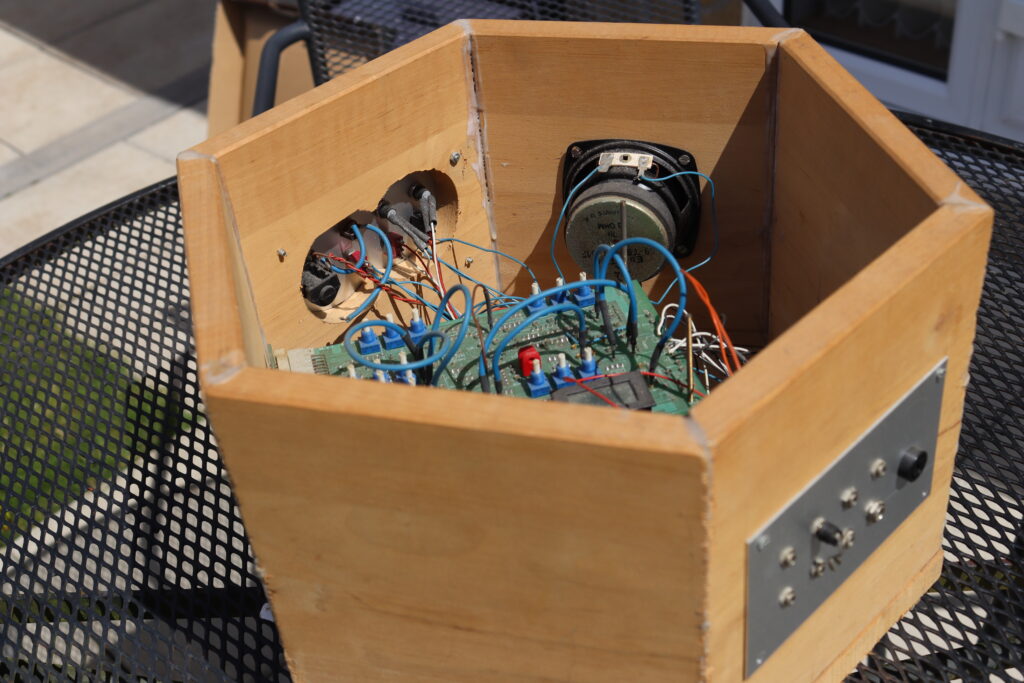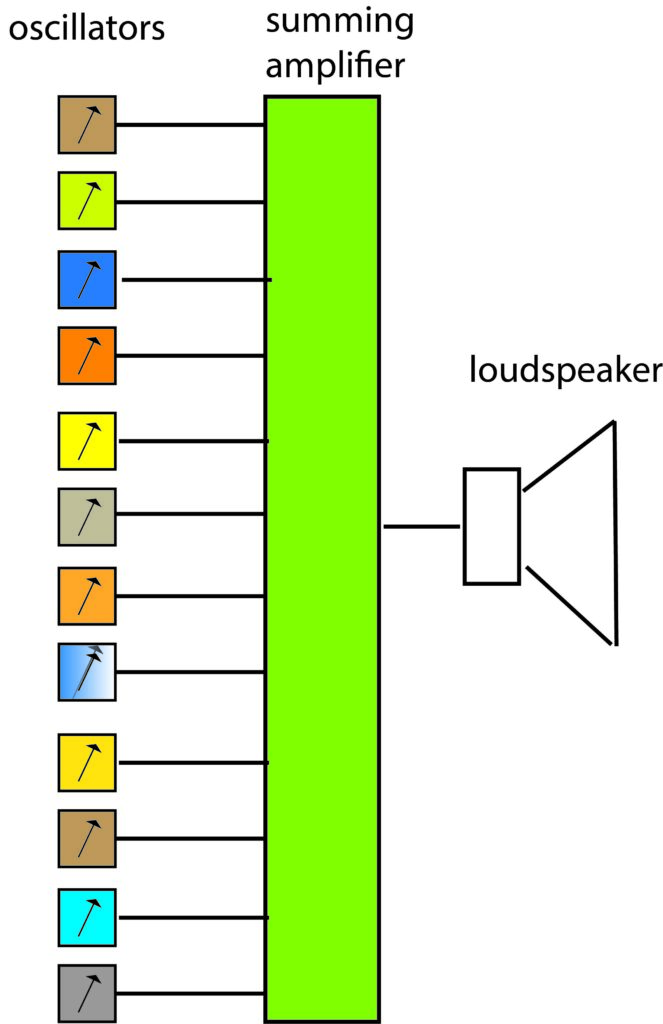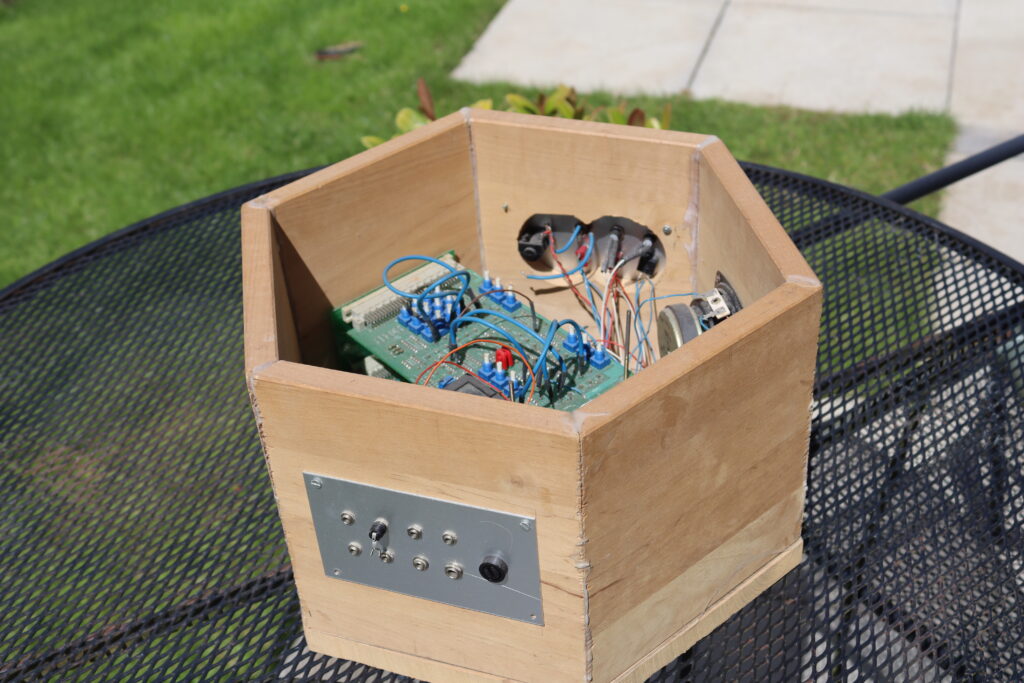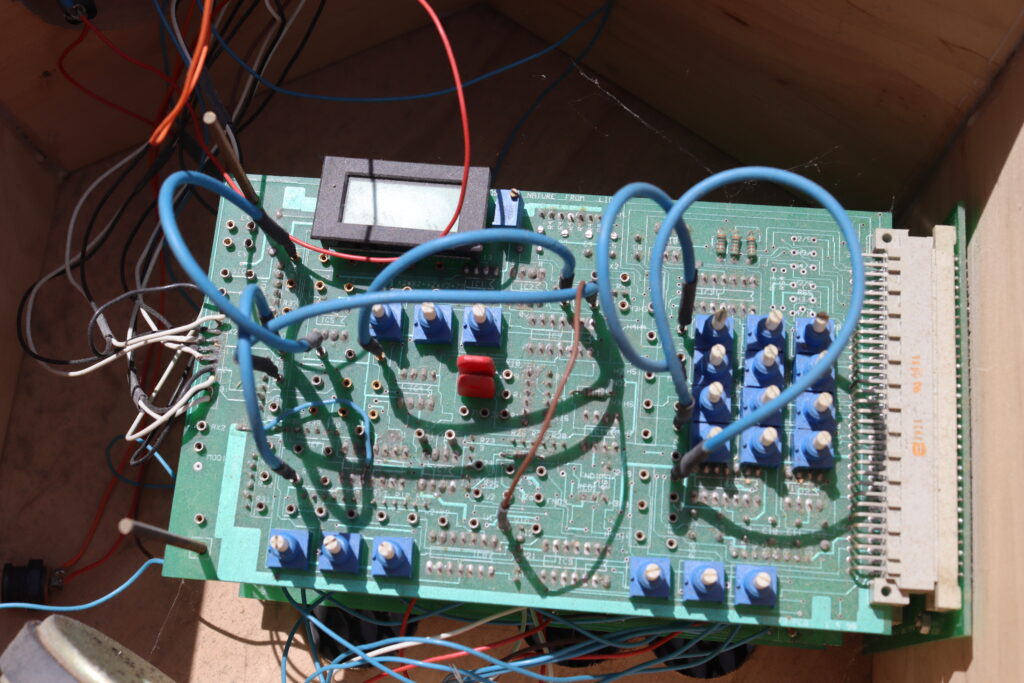
It was one of those projects where inspiration came and was translated as best I could into a physical reality. As a project it was developed around 1995. It was essentially the construction of a complex sound generation system that consisted of sine and triangular wave generation signals fed to a single loudspeaker. As I reacall there were 12 separate channels. The various sound channels could be independently altered manually to give effects, for example, of sound frequencies dynamically changing and which was both challenging and pleasant to the ear. This type of sound generation is basically different from most ‘sound machines’ which work around ‘notes’ on a musical scale and which themselves are in fact a mixture of pure harmonic frequencies. There may also be configurations of initial rising sound levels at the start of a note and the decay of the sound. The way in which the Heliophone worked was essentially via a voltage to frequency generator chip using a then widely available oscillator device. Supplies of the chip are now impossible to obtain but can be implemented using alternative devices. The figure below indicates the principle of summing audio outputs of the various oscillators.


My father managed to create a sturdy six sided wooden case for the project which has essentially preserved the innovation.

With the passage of time, thoughts of a ‘remake’ of the system spring to mind – but perhaps using different techniques. The notion emerges to actually create the voltage waveform that generates the sound as an exercise in software engineering. This involves essentially driving the digital values of the waveform through a digital to analogue converter at a rate of say 16000 per second for a given channel and with the option of creating multiple channels. This reduces the element of electronic design and places the emphasis on data creation and channelling to the digital to analogue systems. A selected waveform would contain a blend of higher harmonics and where contributions at higher frequencies are present in reducing amplitudes. A so called sawtooth waveform contains both even and odd harmonics while a triangular waveform contains only odd harmonics. It can be considered that there are an infinite number of possible harmonic ‘mixes’ based on a base frequency.
The interest, however, would be in making the generated sound dynamic. This should be achieved by changing the base frequency with time and/or changing the mix of referenced harmonics. It could even be possible to change the rate of frequency change of each harmonic component. Such subtle levels of control would be complex to introduce into analogue design systems. Pure sinewaves are, by comparison, relatively ‘plain’ in their listening appeal.
The digital design approach, however, consumes extensive sets of data. For a single channel a two minute output at 16 kHz a total of 120×16000, around 2 Mbyte values are required. For 6 separate channels this would equate to around 12 Mbyte of data.
A key part of the design of such systems is bring able to drive stored digital data in computer files to an analogue output system.
This type of development, however, focuses on the dynamics of sound rather than on specific sounds on a musical scale. Imagine the poor old cochlea presented with a flood of everchanging sound frequencies. This is the very type of sensory activation that could leak out into other neural pathways that are seldom activated.